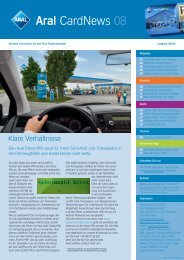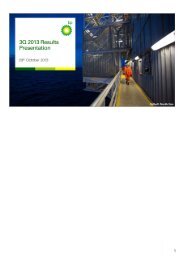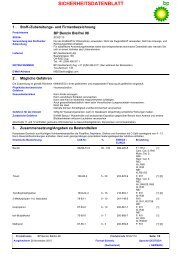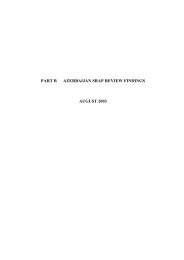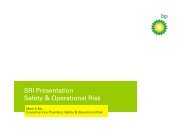Don Field Decommissioning Programme (pdf, 7.8MB) null - BP
Don Field Decommissioning Programme (pdf, 7.8MB) null - BP
Don Field Decommissioning Programme (pdf, 7.8MB) null - BP
You also want an ePaper? Increase the reach of your titles
YUMPU automatically turns print PDFs into web optimized ePapers that Google loves.
<strong>Don</strong> <strong>Field</strong> <strong>Decommissioning</strong> <strong>Programme</strong>DON-<strong>BP</strong>-0015.6.2 Technical FeasibilityThere are no major technical issues identified with any of the decommissioning options.Leaving the pipelines in situ or selective recovery involves significantly less work thanremoving the pipelines and therefore carries less technical risk.The highest technical risks would be associated with full recovery options when liftingthe pipes to surface whilst minimising loss of material to the seabed.5.6.3 Safety of PersonnelFor all options that involve leave in situ or leave in situ with selected recovery, theongoing survey requirement introduces long-term committed survey risks that dominatethe overall risks. Long-term survey risks contribute 50% or more of overall risks fordecommissioning in situ options. However, even with the addition of a long-term survey,the overall risks for decommissioning in situ are still the lowest of all thedecommissioning options due to the minimal operational workscope involved.Site preparation, including destruction/recovery of flexiweight mattresses over theNLGP, accounts for almost one third of the overall risk associated with selectiverecovery. Timing this recovery to coincide with decommissioning of the NLGP itselfwould enable selection of methods that are less diver-intensive and of shorter duration(since protection of adjacent assets would no longer be a consideration), thus reducingoperational risks. With higher operational risks, selective recovery over the NLGP showsan increased overall risk compared with the option without recovery over the NLGP,although this is still much less than either of the full recovery options.Risks for full recovery options are much higher with the increase in risk due to offshoreoperations (ie diving, cutting, rigging and lifting operations).Full recovery by reverse reel is much better than recovery by cut and lift, with thetransfer of pipe cutting operations onshore. However, all full recovery options presentoperational risks significantly higher than those for leave in situ or selective recovery.Full recovery of the pipeline by whatever means eliminates any long-term surveycommitment and the risks this would introduce. However, the magnitude of theoperational risks still result in higher overall risks with recovery by cut and lift presentingthe highest risk.5.6.4 Environmental ImpactsDirect and indirect environmental impacts from activities associated with thedecommissioning of pipelines can be either short-term impacts directly related tohandling, recovering or recycling of materials, or long-term impacts lasting usually untilthe total degradation of respective materials.Short-term Environmental ImpactsThere are no identified significant environmental impacts associated with leaving thepipelines in situ on the seabed apart from the physical presence of the pipelines.Small amounts of cuttings may be disturbed towards each end of the pipelines, whichmay cause a local impact on the adjacent seabed.PipelinesMay 2011 10-27




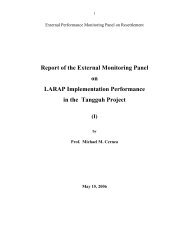
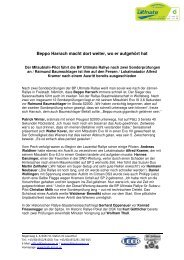
![[PDF] Deepwater Horizon: Accident Investigation Report - BP](https://img.yumpu.com/51697031/1/190x245/pdf-deepwater-horizon-accident-investigation-report-bp.jpg?quality=85)

